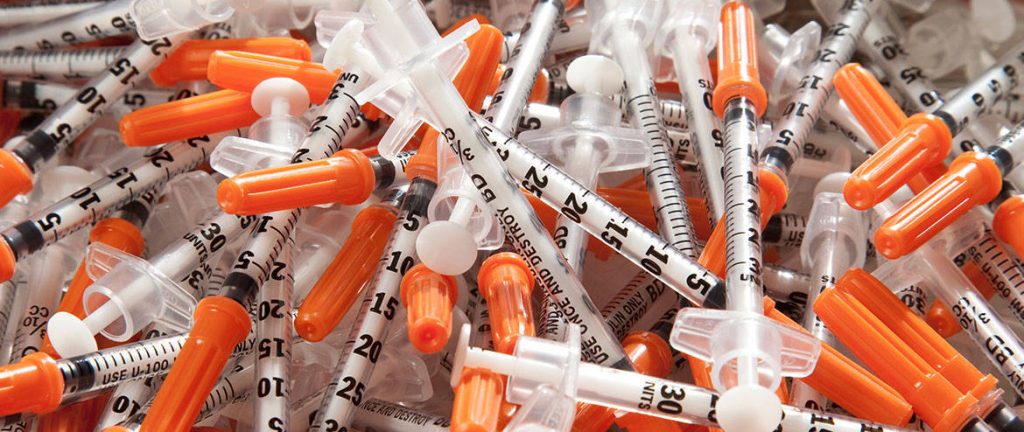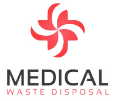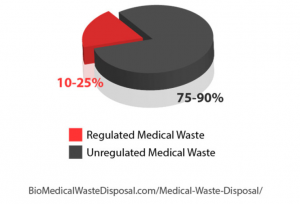WHO (World Health Organization) actually mentioned that in 2000, there were 32% new Hepatitis B infections as a result of improper way associated with contaminated syringe disposal. In 2002, WHO conducted a study to review 22 countries about their method of Houston medical waste disposal management along with resulting various ranges from 18% up to 64% that used improper ways of biomedical waste operations.Dangerous, huh?
Who Are At Risk For Biomedical Waste Exposure?
People who have the highest risk of being the biomedical waste, for instance, healthcare workers, patients, waste collection and disposal staff, and even our environment. The biomedical waste may pose an occupational hazard when managed incorrectly. Therefore, we need special precautions and the well-trained personnel to manage those biomedical wastes and keep the risk low.
Why We Need To Manage The Biomedical Waste In The Right Way?

There are several reasons to manage the biomedical waste in an appropriate way:
- Health – Nobody wants to see blood drops on the floor when they walk into hospital visiting a sick friend because the risk of being infected by any number of diseases
- Infection risk – the risk of infection obtained from sharp injuries can lead to infection
- Environment pollution – The risk of air, water and soil pollution directly from waste due to defective incineration or autoclaving can be harmful.
The biomedical waste treatment and disposal need to be in a complete management to ensure the safety of the workplace and maintain our health. If you maintain the safety process correctly, it will:
- Effectively reduce your legal liability
- Reducing the danger to the community, personnel and patients
- Keep your reputation high
The OSHA (Occupational Safety and Health Administration) has an established procedure for dealing with biomedical waste hazards that can minimize our risk with contaminated articles. Thus, we at BioMedical Waste Solutions, LLC, use OHSA standards as our guidance to dispose the medical waste properly.
Brief History of Regulated Biohazardous Waste Disposal in America:
In 1988, a famous act namely Medical Waste Tracking Act (MWTA) was addressed to handle the disposal of medical waste in coastal areas caused by numerous medical along with household waste during several coastal parts, therefore a two-year software was implemented in the affected areas (New You are able to, New Jersey, Connecticut, Rhode Area, and Puerto Rico). This kind of act was expired in June twenty one, 1991.

During that point, EPA gathered much information and executed medical waste studies and along with MWTA, they managed to see several treatment technologies that has been available in those days involving incinerators, microwave units, and several different types of mechanical and chemical systems you can use for reducing the waste. Thus, resulting a new local regulation of medical waste management that has been implemented to every single state, such as Medical Waste Management 2015, as one of several recent medical waste regulations for California State.
Sorry to be able to disappoint our Walking Dead fans, but improper disposal of medical won’t be the reason for the Zombie Apocalypse in the U.S. because stringent regulations, laws, and guidelines.
Regulated VS Unregulated
Of all the health care waste (HCW) there exists essentially two kinds: Regulated medical waste (RMW) and unregulated medical waste (UMW). Approximately 75% to 90% of HCW can be UMW (unregulated) or often known as healthcare general waste (HCGW). This waste is comparable to typical household waste composed of papers and plastics which might be not been in contact with patients and can be categorized as non-infectious. This waste is simply disposed as per municipal regulations. Roughly only 10% to 25% of HCW can be infectious/regulated medical waste (RMW).

Naturally this RMW should be handled with exclusive care as we’ll describe below because doing so could pose any threat to the healthiness of others, either by contaminating the environment or through direct hitting the ground with an individual. Easier strategy to differentiate the two types is to ask yourself “could this waste kill someone or cause them to become sick?” If yes, then this waste is regulated and need to be handled with exclusive care.
NOTE: The use of “medical waste”will be regarded as “regulated medical waste” (RMW), unless otherwise stated.


